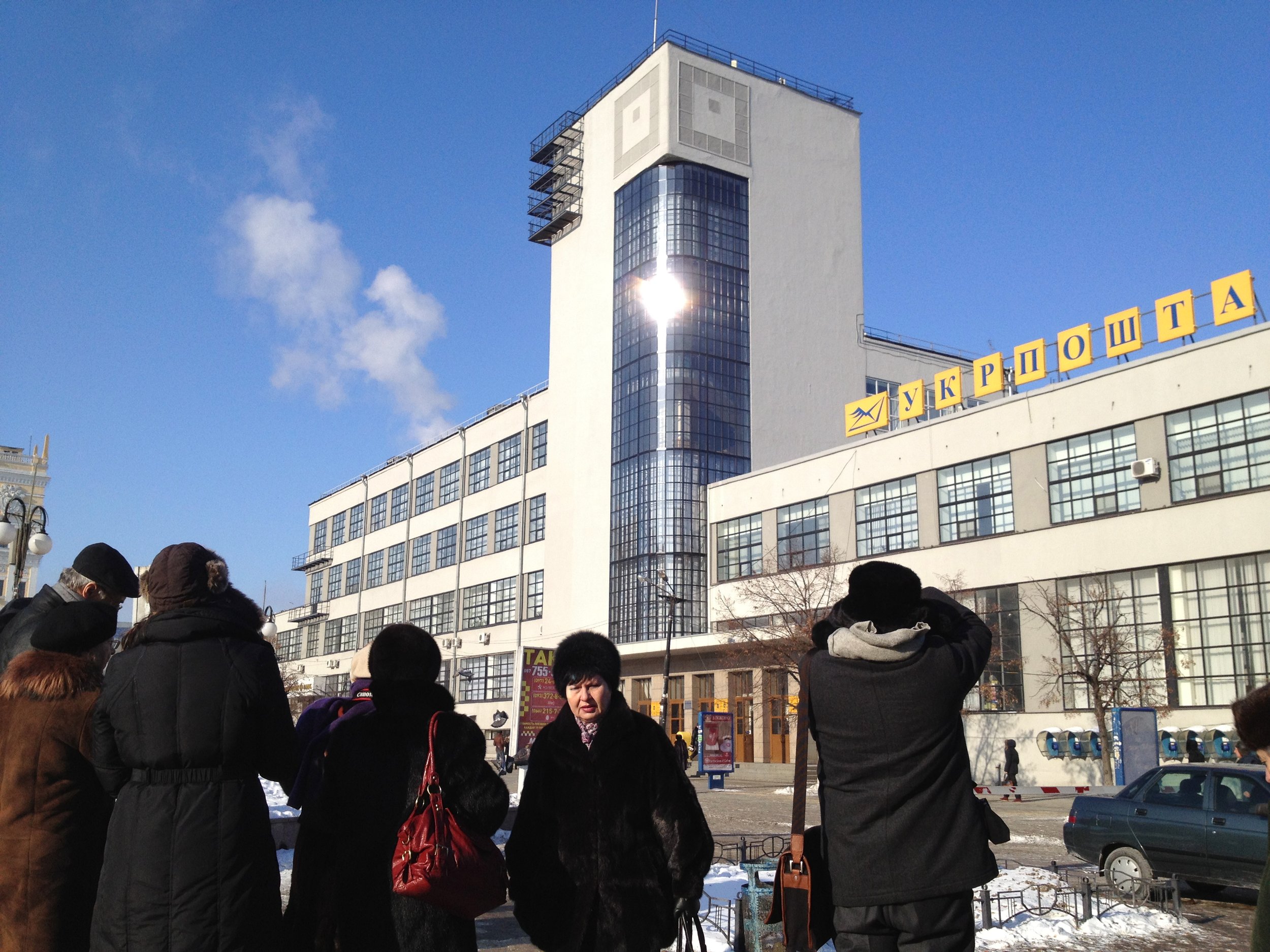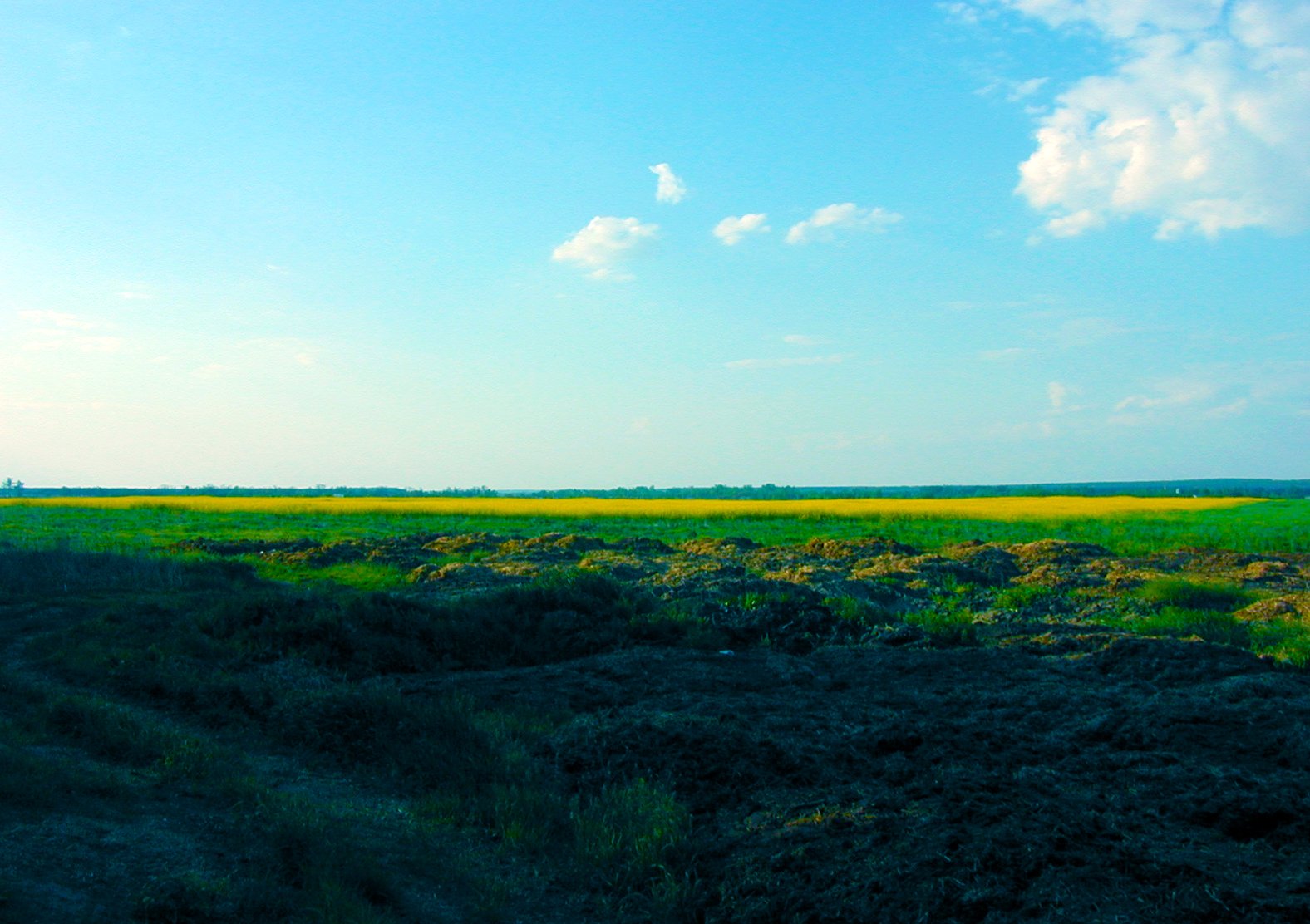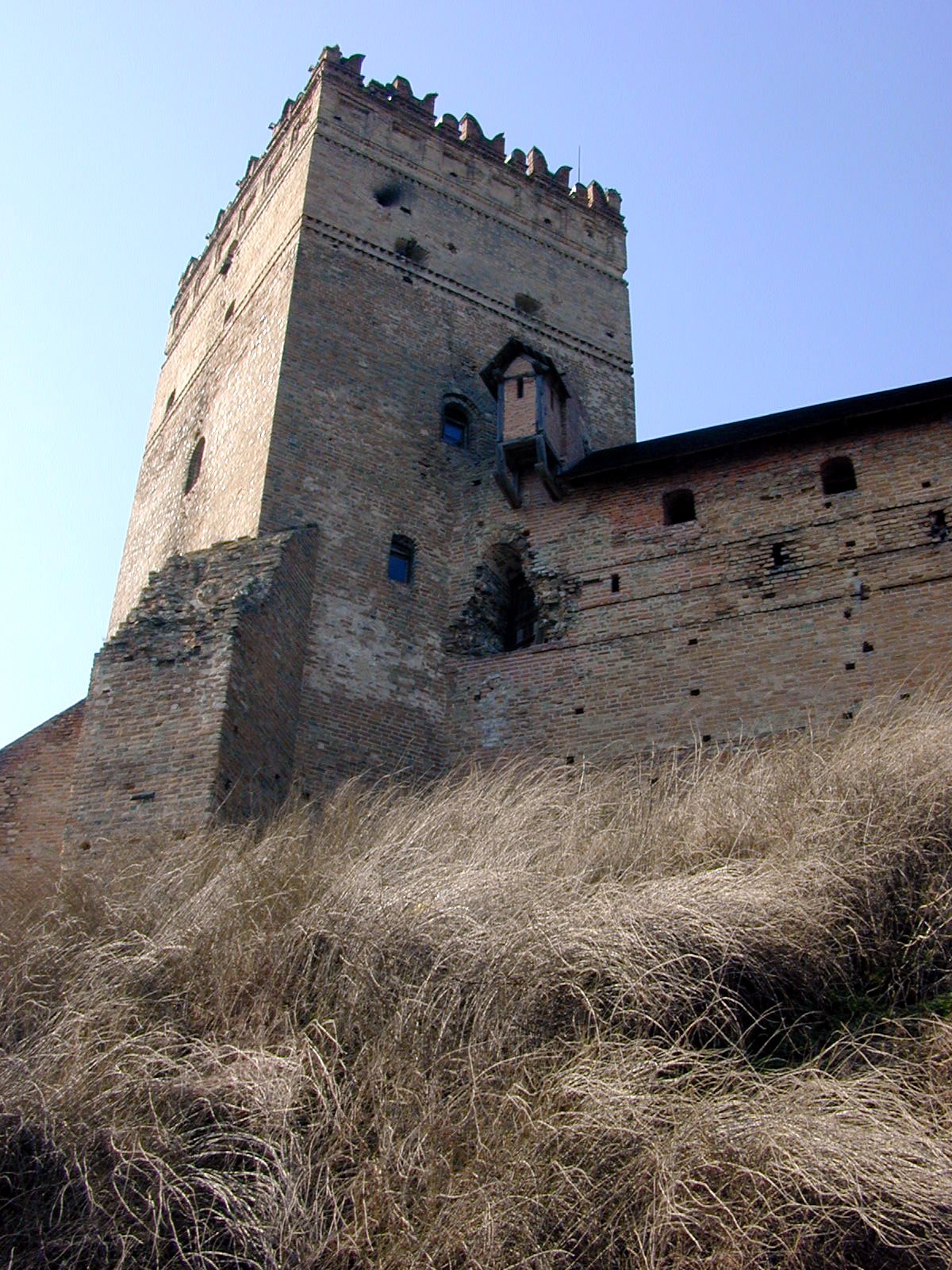Love Letter to Ukraine in the Language of Architecture
Since the full-scale Russian invasion of Ukraine began on February 24, 2022, images of damaged, often decimated, buildings have come to define the Ukrainian built environment in the international imagination. It is important not to look away from these images of destruction, particularly of the explicitly civilian targets—mass housing estates, schools, theaters—that convey viscerally Moscow’s aim to destroy Ukrainian culture as the Russian military encroaches upon sovereign territory. Documenting destruction not only of UNESCO World Heritage sites like the Residence of Bukovinian and Dalmatian Metropolitans (now Chernivtsi University), but also everyday architecture like late-Soviet concrete panel housing, will assist war crimes investigators as they build cases against Russia for bombing and land grabbing that began in 2014 with the illegal annexation of Crimea and portions of eastern Ukraine.
Figure 1. Palace of Culture for Railway Workers, Kharkiv, Ukraine. Architect: O. Dmitriev with V. Veruzhsky, 1928-32. Photograph by Christina E. Crawford, 2012.
When this latest stage of the ongoing war began this winter, I was drawn up to my attic to find the binders of CD-ROM disks filled with my photographs of Ukrainian architecture and landscapes. Back in 2001 and 2002, while pursuing a Master of Architecture degree, I took a year off to accept a Fulbright grant to Ukraine. The research project I undertook, “Nation Building,” asked whether a decade after independence, a perceptibly Ukrainian strand of architecture was emerging. My research methodology was this: travel. A lot. Though based in Kyiv, I crisscrossed the country by train and car, and wandered by foot through cities and towns, taking photos of architecture and urban spaces with my early generation digital camera. I visited ancient and medieval sites, Soviet-era monuments, post-independence churches and malls, and captured them through my lens.
“Through absorption, adaptation, and persistence, the prevailing character of Ukrainian architecture is complexity: an intertwining of cultures and heritage from different periods.”
The more I traveled and photographed, the more it became clear to me that what renders the Ukrainian architectural context remarkable is not some perceptible formal commonality but its deep and broad heterogeneity. Ukrainian architectural heritage is composed of layers upon layers of history. The two dozen photos I chose to share in this essay include the fourteenth-century medieval castle of Kamianets-Podilskyi, built as a bulwark by the Polish-Lithuanian Commonwealth; the sixteenth-century Bakhchysarai Palace of the Crimean Khans (now occupied by Russia); and Kharkiv’s Derzhprom on Ploshcha Svobody (Freedom Square), a massive Soviet project completed in 1929 to demonstrate socialist power that is now a prime site of Ukrainian sovereignty.[1] I ultimately determined that through absorption, adaptation, and persistence, the prevailing character of Ukrainian architecture is complexity: an intertwining of cultures and heritage from different periods.
Clicking through the now twenty-year-old photos, and recalling my return visits to Ukraine in the intervening years, I see in this architecture Ukrainians’ capacity of to “flip the script.” Buildings like the ones I share here—clearly emblematic of the Polish, Tatar, Imperial Russian, Habsburg, or Soviet eras in which they were built—have become representative of independent Ukraine, hosting new governmental entities and new everyday life. As we await the coming era of post-war reconstruction, these sites and buildings will assume new cultural import as settings that bore the brunt of Russian aggression.
Author’s note: Funding for this research came from the Fulbright Academic Exchange Program in Ukraine.
Notes
[1] All of these sites are on the UNESCO World Heritage Tentative List. That these remarkable ensembles remain in bureaucratic limbo many years after application indicates Ukraine’s lesser status to international bodies like UNESCO. As Ievgeniia Gubkina recently noted, “UNESCO's approach of including numerous buildings on temporary candidate lists, and thus de facto failing to protect them, is intolerable. We’re tired of nominating things! We need some certainty about our architectural heritage. But politically as well, the uncertainty for our country within Europe must come to an end.”





























